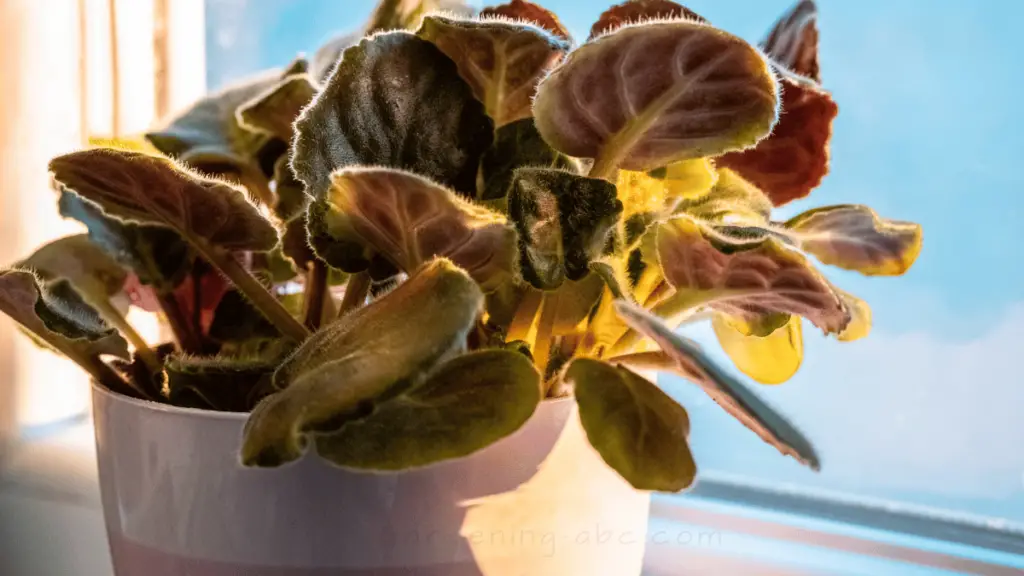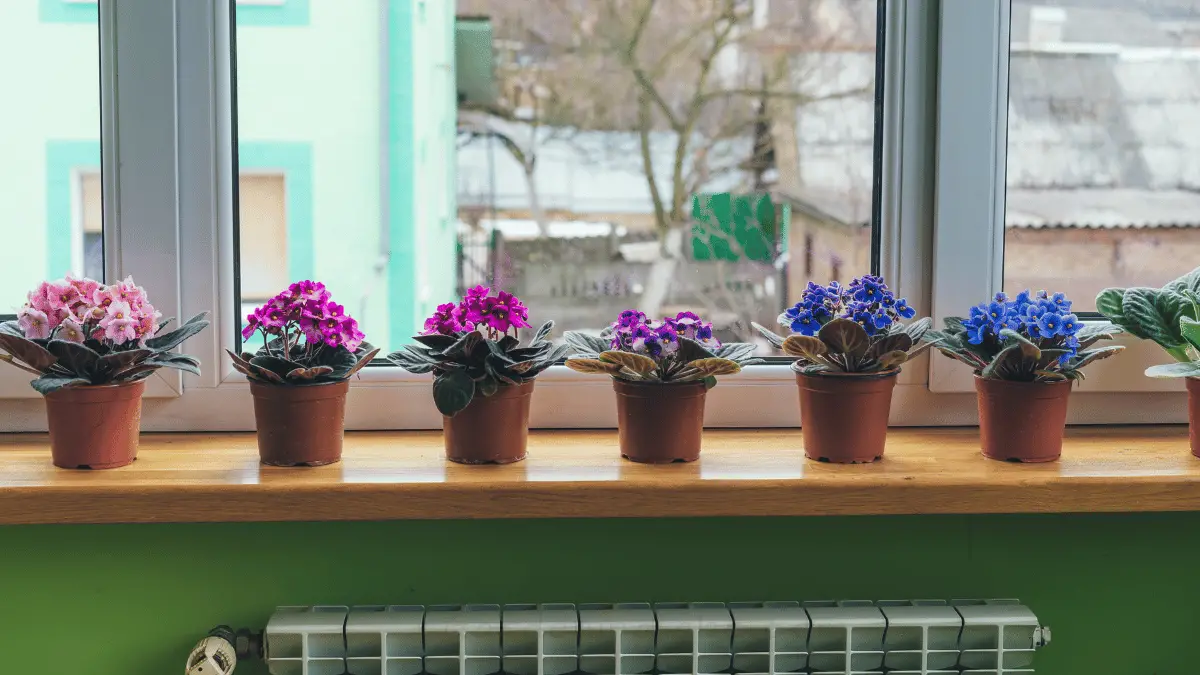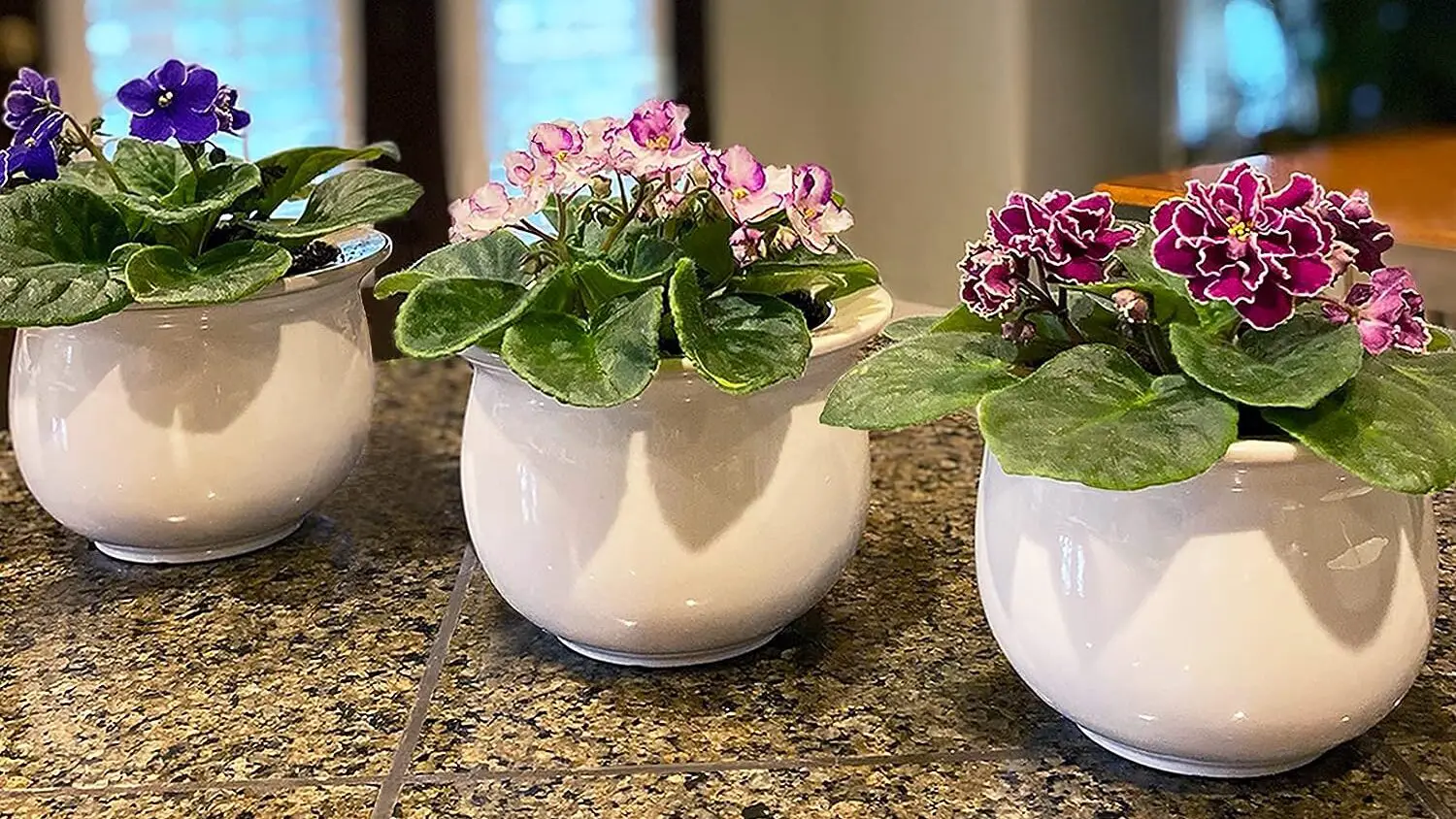We use affiliate links to run our site. When you buy through links on our site, we may earn an affiliate commission, without any added cost to you. Learn more
African violets are popular and easy-to-grow houseplants known for their colorful flowers and fuzzy leaves. While they aren’t too demanding in terms of care, selecting the right pot is crucial for their health and growth.
The pot size, material, and design all impact how well your African violets will thrive. In this blog post, we’ll guide you through the key factors to consider when choosing pots for your African violet plants.
Table of Contents
Why African Violet Pots Matter:
The right pot can significantly impact the well-being and growth of your African violets. These pots not only provide a beautiful home for your plants but also play a crucial role in maintaining proper moisture levels, aeration, and root health.
Poorly chosen pots can lead to issues like root rot, insufficient drainage, and cramped growth, affecting the overall health and longevity of your plants.
Key Points in Choosing the Perfect Pot for Your African Violets
When selecting an African violet pot, consider the following factors:
- Plant Size: Choose a pot that accommodates the root growth of your African violet, typically about one-third of the leaf span for a fully mature standard plant.
- Growing Goals: Determine whether you want to encourage vegetative growth, stimulate flowering, or simply maintain the plant’s current size.
- Aesthetic Appeal: Consider the appearance of the pot and how well it complements your indoor space and decor.
- Drainage and Watering: Ensure the pot has proper drainage holes or plan to compensate for their absence with suitable watering strategies.
- Stability: If you’re growing larger or top-heavy specimens, prioritize pots that provide stability and minimize the risk of tipping over.
Optimal Pot Size for African Violets:
The pot size has a significant effect on African violet growth and flowering. You want to choose a pot that’s not too large or too small for the plant’s root system.
Here are some tips on getting the pot size right:
- – Aim for a pot width about 1-2 inches larger than the diameter of the plant. This allows ample room for growth while avoiding pots that are oversized. Oversized pots retain too much moisture and can lead to root rot.
- – For younger plants, start with a 3-4 inch pot. Mature violets may need 5-6 inch pots. Giant varieties can grow in 8-10 inch pots.
- – Avoid going up more than 2 inches at a time when repotting into a larger container. Too big of a jump can shock the plant.
- – Pick pots that are wider than they are tall. African violets have shallow root systems that spread outward rather than downward.
- – Make sure the pot has drainage holes to prevent soggy soil. You can add pebbles or gravel at the bottom to improve drainage.
- – Group multiple small plants together in one larger pot for a fuller look. But don’t overcrowd them—leave enough space between plants for future growth.
- – Ceramic and plastic pots work well. Avoid extremely thin delicate pots that can easily crack or warp.
- – If using decorative outer planters, make sure the inner nursery pot has drainage holes. Remove the inner pot to water, so the plants don’t sit in water.
- – For gift plants, choose a pot size suitable for the maturity level of the plant so recipients can enjoy it for a long time.
A list of suitable pots for growing African violet
Pot Materials for African Violet Plants:
In addition to size, the material the pot is made of also makes a difference for African violets. Certain materials provide better aeration, drainage, and weight than others.
The most common pot materials for African violets are:
- Plastic pots – Inexpensive, lightweight plastic pots are widely available and work fine for African violets. Look for thicker, sturdier plastics over flimsy ones. Make sure plastic pots have drainage holes.
- Ceramic/Terra Cotta pots – These are heavier than plastic but provide excellent air circulation to plant roots. Unglazed terracotta wicks moisture away, so requires more frequent watering. Glazed ceramic holds moisture better.
- Glass pots- Glass pots are pretty and let you see the roots, but provide no air circulation. Make sure glass pots have good drainage.
- Metal pots – Easy to clean and find in interesting shapes, but metal heats up fast and retains heat. Best avoided for African violets.
- Wooden pots – Absorbent wooden pots work well to provide air circulation but require extra care not to rot. Coating interior surfaces with polyurethane can help protect them.
- Self-watering pots – These pots have reservoirs at the bottom to provide constant moisture. They can make African violet care easier but only work well with very absorbent potting mixes.
- Baskets – Using wire, plastic mesh, or moss lining baskets allows excellent airflow around the roots. Make sure baskets have a waterproof liner.
- Cachepots – Decorative cachepots can be used to cover up plain nursery pots. Just remove the inner pot when watering to prevent root rot.
The best picks are plastic, ceramic, terra cotta, wood, and self-watering pots. Glass and metal pots can work with proper care. Pick pots with adequate drainage holes for any material selected. When repotting, gently remove root-bound plants to avoid damaging the delicate roots.
Ideal Pot Designs for Displaying African Violets:
Beyond material, the shape and decorative design of the pot plays a role in both the health and display of African violets.
Here are some great pot design options:
- Traditional Round Pots – The most common design, rounded pots work for any setting. Make sure the diameter is wide enough for the plant.
- Oval Pots – An elegant look, oval pots suit African violets well. A wider middle provides more root space.
- Squat Pots – Short, squat pots give stability and raise plants closer to eye level. Be sure depth is adequate for roots.
- Tall Cylinder Pots – These showcase violets beautifully but may topple over if too narrow. Use heavy materials like ceramic to prevent tipping.
- Bowls/Dishes – Shallow bowls keep the soil evenly moist and provide space for topdressing. Ensure bowls have drainage holes.
- Hanging Pots – Hang violets at eye level. Use sturdy hooks and chains made for plants. Self-watering hanging pots make care easier.
- Window Boxes – Plant several violets together for a colorful display. Use wide window boxes with good drainage.
- Cache Pots – For easy moving, put nursery pots inside decorative cache pots. Coordinate based on color and design.
- Novelty Pots – Unusual pots like animal-shaped planters or teacups make fun gifts. Pick sturdy novel pots with drainage.
- Colorful Glazed – Glazed ceramic pots in vibrant colors complement the flowers beautifully. Use a matching drip tray.
- Textured Terracotta – The natural look of unglazed terracotta pairs well with fuzzy African violet leaves.
With the range of pot options available today, you can find just the right match for your design style. Always ensure proper care is maintained no matter the type of container used. Mix and match shapes and colors for custom African violet displays that will make your indoor garden shine!
Caring for African Violet Pots

- Watering: African violets prefer consistently moist, but not soggy, soil. Water from the bottom using a saucer or place a moisture-wicking material like a wick or sponge in the pot for self-watering pots.
- Light: Indirect, bright light is ideal for African violets. Avoid placing them in direct sunlight, as it can scorch the delicate leaves.
- Temperature and Humidity: These plants thrive in a temperature range of 65-75°F (18-24°C) and appreciate higher humidity levels, around 40-60%.
- Fertilizing: Use a balanced, water-soluble fertilizer specifically formulated for African violets, following the recommended dosage.
- Pruning and Deadheading: Regularly remove spent blooms and trim leggy growth to encourage bushier, healthier plants.
Final Thoughts:
Choosing the ideal pot is one of the most important decisions to make for growing healthy African violets. Use this guide to pick pots sized appropriately for each plant, made from suitable materials, and designed to complement your home décor.
Monitor soil moisture and fertilize regularly. Re-pot annually in fresh soil. Give them bright indirect light. With proper basic care, your African violets will reward you with endless colorful blooms.
Amazon and the Amazon logo are trademarks of Amazon.com, Inc, or its affiliates.

Hi there! My name is Prasenjit and I’m an avid gardener and someone who has grown a passion for growing plants. From my hands-on experience, I have learned what works and what doesn’t. Here I share everything I have learned.

